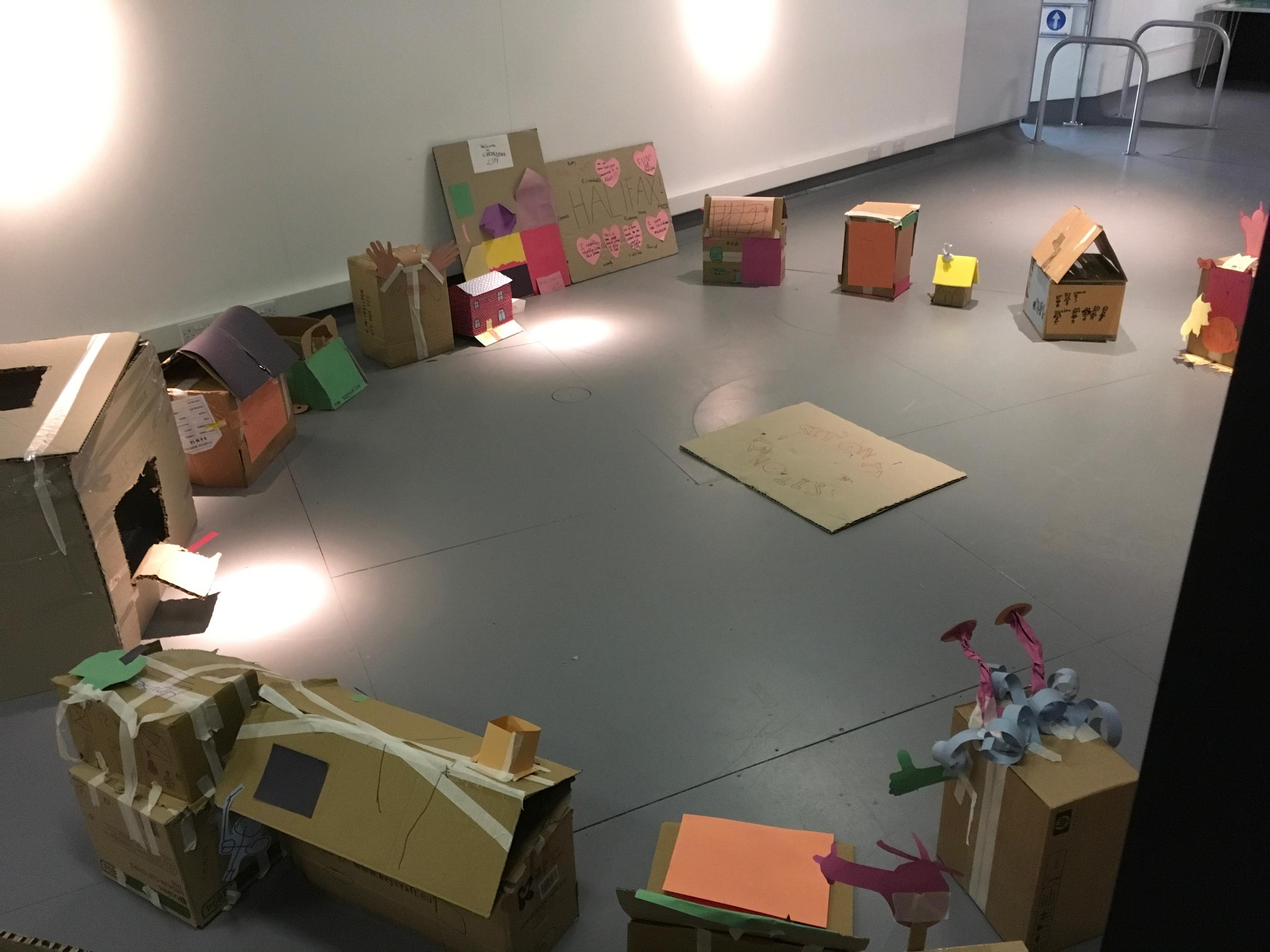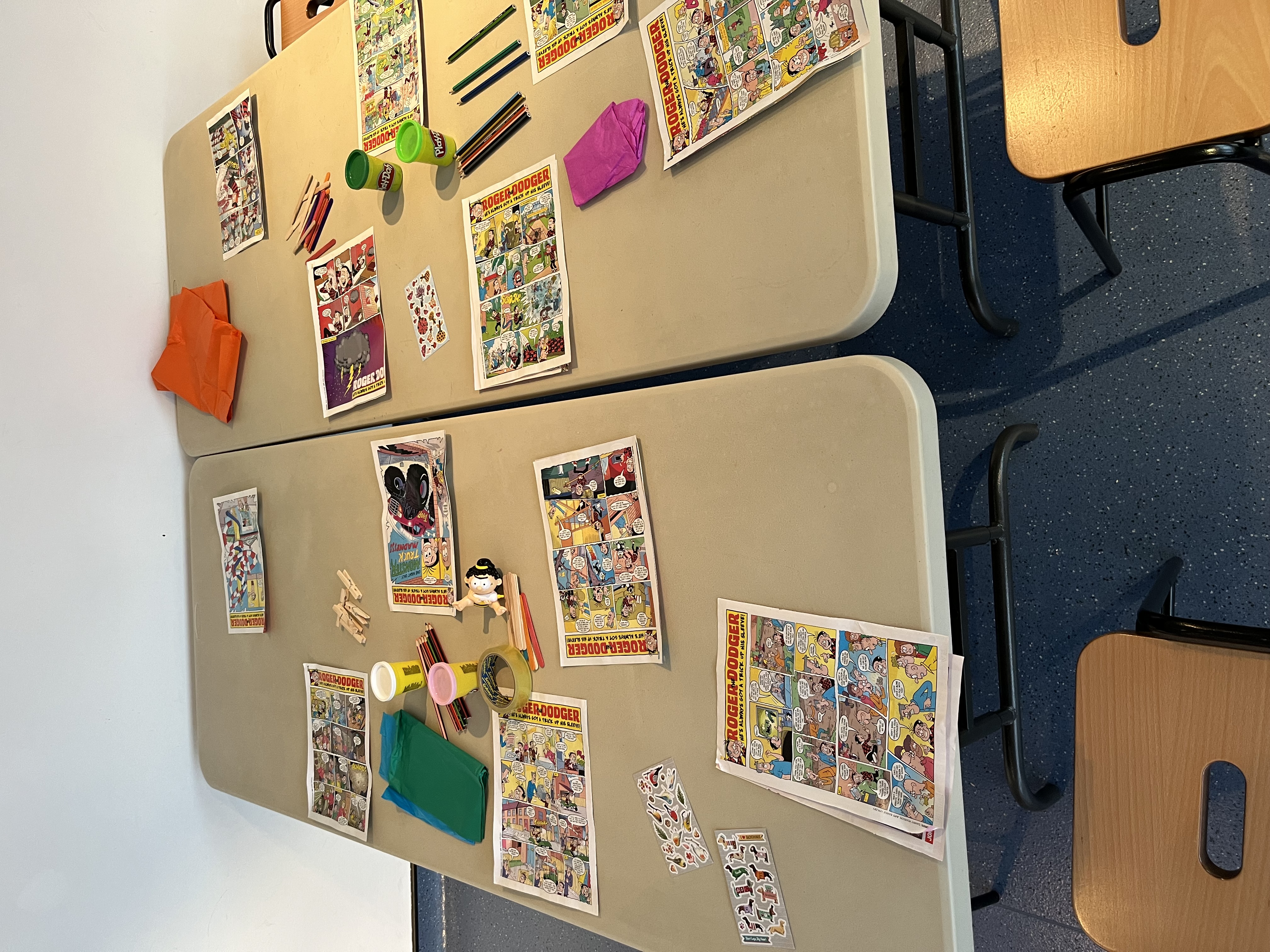Future of Broadcast Media according to Kids
September 2022 - March 2023
Funded by AHRC via XR Stories, York University
with Eleanor Dare and X||dinary Stories
This project explored what children aged 7-11 think is the future of broadcasting. It sat alongside two other workpackages, one that looked at younger children and another at teenagers and formed part of a body of work being undertaken by XR Stories. More about the other two projects can be found here.
The objectives of the project were acheived by running a series of public engagement activities for groups of children at the National Science and Media Museum in Bradford. Here, we offered children the opportunity to explore their ideas on the future of broadcast media in relation to a series of new technologies, such as, photogrammetry, Cardboard VR (age appropriate) and proto-metaverse platforms. Participants were given the opportunity to explore these technologies through a series of hands-on art and design-based research methods.
The intention of these workshops was to seek an understanding of children's ideas for how they would like to consume future TV content. It built on the decline of children watching linear TV and the planned closing of CBBC in 2025/6. In relation to this, we introduced children to a range of new technologies and sought their ideas for other ways in which they might like to engage with TV content. There was a two-prong focus on engagement via immersion (i.e. VR) and via interaction (e.g. proto-metaverse like mass online gaming platforms).
Research Aims & Questions
Aims:
• To undertake public engagement activities on the topic of future media broadcast
• To explore how children aged 7-11 years-old would like to consume heritage brands through interactive media and, or new technologies
Research Questions:
1. What are the elements most important to 7-11-year-olds when changing heritage media into interactive media?
2. What are the elements most important to 7-11-year-olds when changing heritage media to immersive media?
3. To what extent do emerging technologies, such as photogrammatry, augmented and virtual reality used in future media broadcasting engage children?
4. What aspects of consuming broadcast media through immersive media is engaging/ disengaging for children?
5. What aspects of consuming broadcast media through interactive media is engaging/ disengaging for children?

Public Engagement Workshops
Public Engagement Workshop 1 & 2: Character Creation
The first two workshops focused on changing characters from the heritage brand, the Beano into future broadcasting prototypes using photogrammetry.
Children who attended the public engagement workshops were given a range of cultural probes. These are a collection of visual and physical materials that act as a prompt to engage non-design specialist participants in design processes (see images below). Specifically, for Workshops 1 & 2 children were provided with a range of stories and characters from the Beano and asked to create models using Play-Doh or LEGO of those they would like to form part of a virtual world.
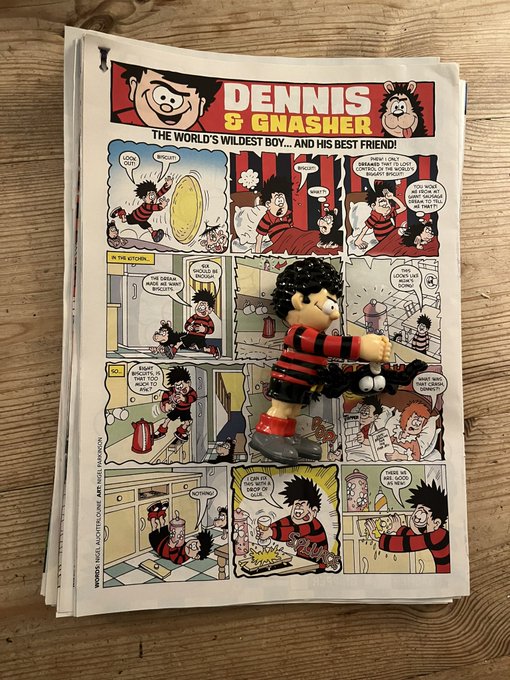



In terms of research, the children's creations were scanned using a photogrammetry app and also photographed. Children who consented to take part in the research were informally interviewed about what they had created and why in order to collect dialogue on their decision-making processes.
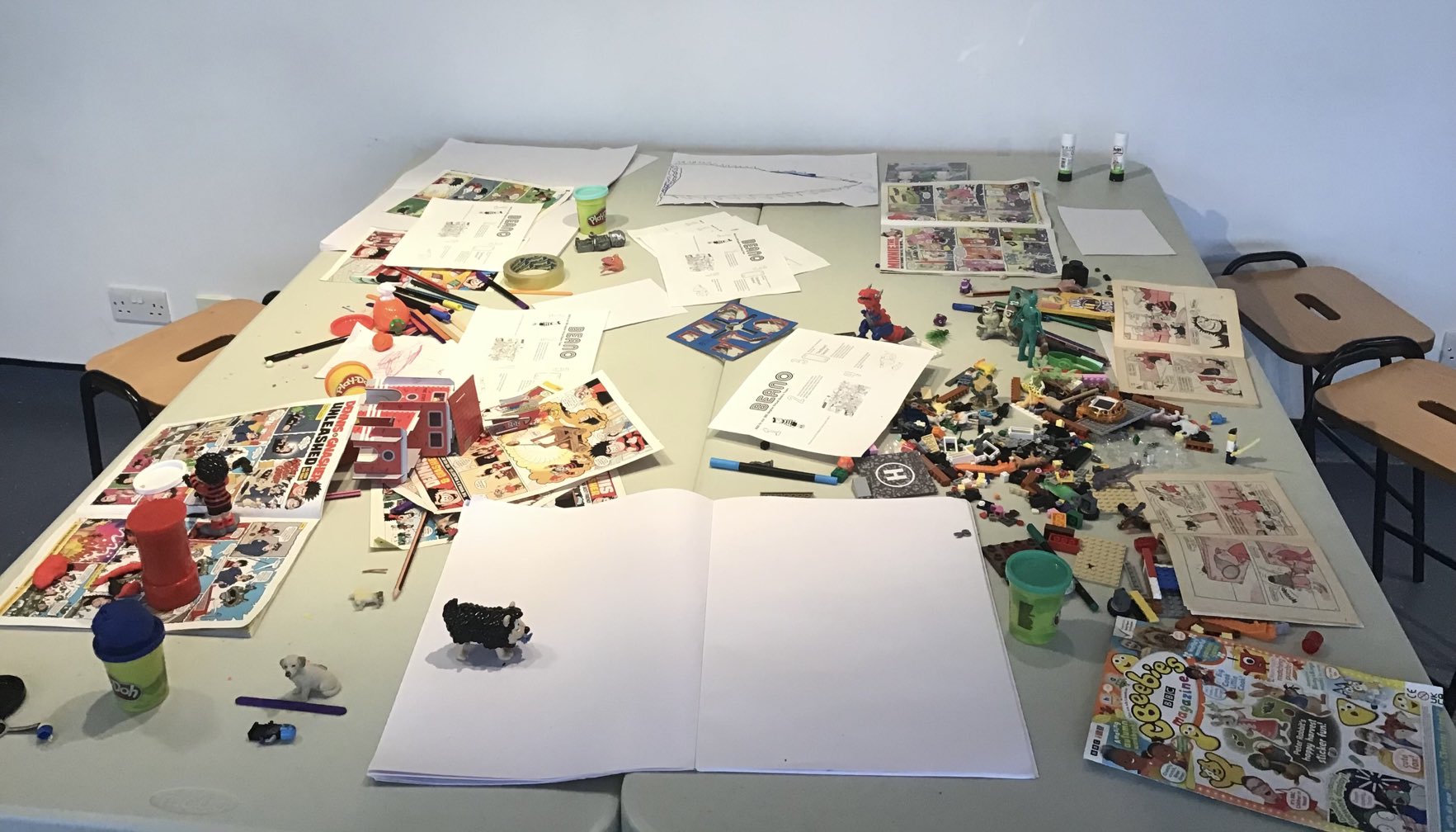




Introducing participants to photogrammetry was also seen as offering insight into emerging tools for storytelling that could form part of future broadcast media.
Public Engagement Workshops 3 & 4: Worldbuilding
The third and fourth workshops focused on the creation of buildings and objects for a virtual Beano Town. Using the same cultural probes as were used for the first two workshops, participants were asked to create buildings they wish to remain in the future broadcasting of the Beano from cardboard boxes or update with entirely new ideas of their own based on their image of what Beano Town might look like in the future. There is also the option of creating objects needed in the town from PlayDoh.
 Testing the methodology, creating Minnie the Minnx’s house
Testing the methodology, creating Minnie the Minnx’s houseAfter creating a building or object participants placed them in a circle so they could be filmed in 360 and then viewed in virtual reality.
 Image: research prompt for workshop participants
Image: research prompt for workshop participants By including techniques such as world-building in online gaming spaces, photogrammetry and software such as Blender in our data collection workshops, we introduced Bradford children to a range of techniques commonly used by adults in the design and production of new forms of storytelling media.
Developing Future Broadcast Prototypes
As mentioned above we scanned models made by children to produce 3D assets of children’s work during the public engagement workshops. We then used these in the development of future broadcast prototypes.


 Images by Eleanor Dare
Images by Eleanor DareWe produced a range of content using different emerging technologies to consider the role of both interaction and immersion, seperately and combined. For example, I added the models made by workshop participants to the interactive online gaming platform, Roblox.


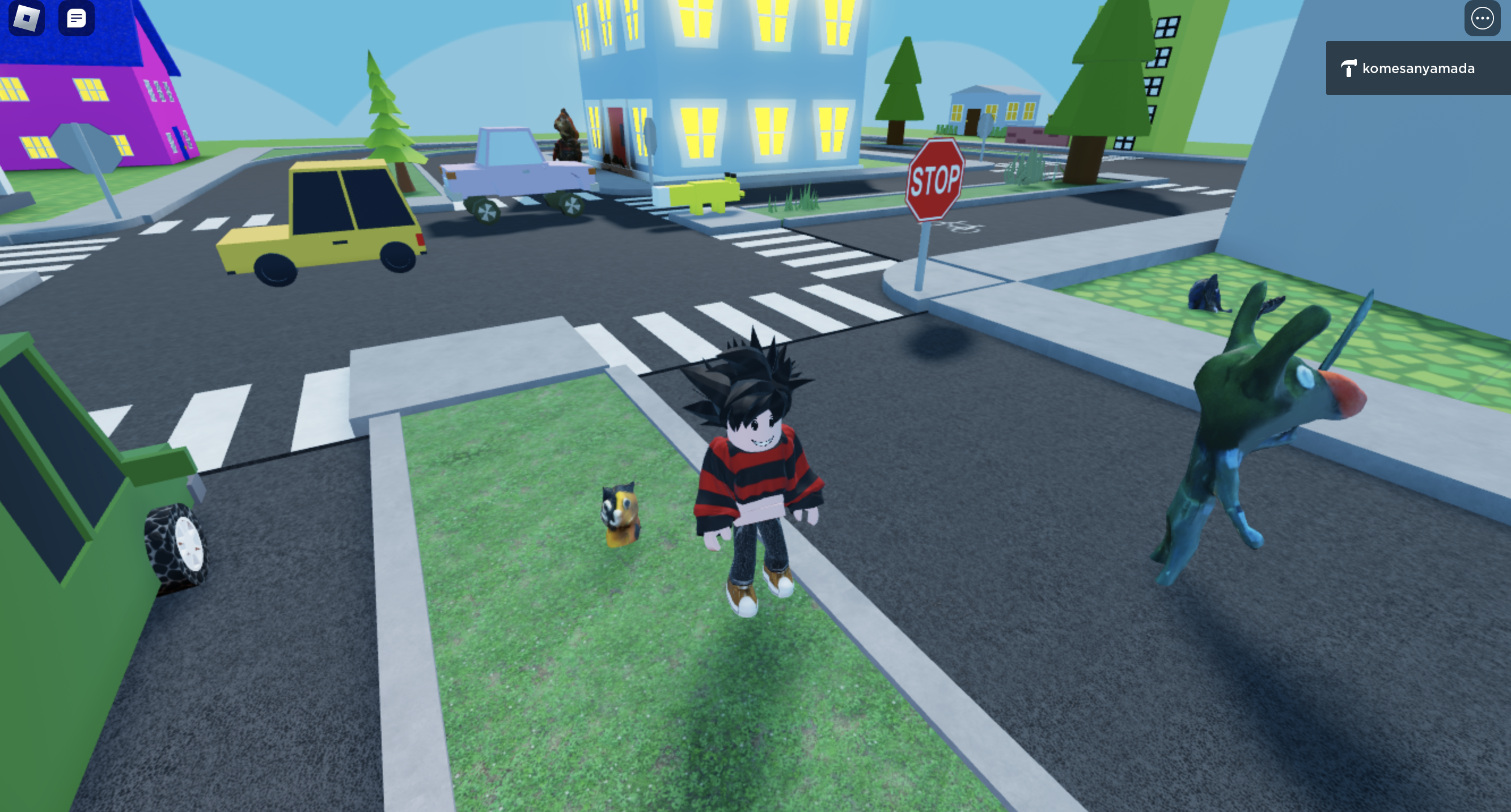

Images by Dylan Yamada-Rice
Eleanor on the otherhand rigged and animated children’s models so that they form part of an augmented reality experience:
 Image by Eleanor Dare
Image by Eleanor DareOr, to allow children to dance with their creations in Virtual Reality:

Image by Eleanor Dare
Eleanor also tested various AI and Machine Learning applications. Then, together we sought to understand how these might change workflows in kids media design and production and where children might fit into these processes. This raised ethical issues that need to be researched in further depth and carefully considered by the kids media industry.
Testing Future Broadcast Prototypes
The final two workshops tested children’s reactions to prototype future broadcast media made by Eleanor and myself (see above).
Related Publications
The findings were published as final project report. Available for download here:

Dare, E. and Yamada-Rice, D. The Future of Broadcast Media According to Kids. The Children’s Media Year Book 2023. Published by the Children’s Media Foundation.


A write up was posted onto the BBC Rewind website. This can be seen here.

Related Talks
The Future of Broadcast for 7-11 year olds, Children’s Media Conference 2023, with Eleanor Dare.
The Future of Broadcast Media According to Kids, The Future is Northern, The Studio, Leeds, 28th March 2023, with Eleanor Dare.
Dissemination for Children
Additional funding was received to disseminate the project findings to children. Working with Eleanor Dare we produced a comic and Roblox game.



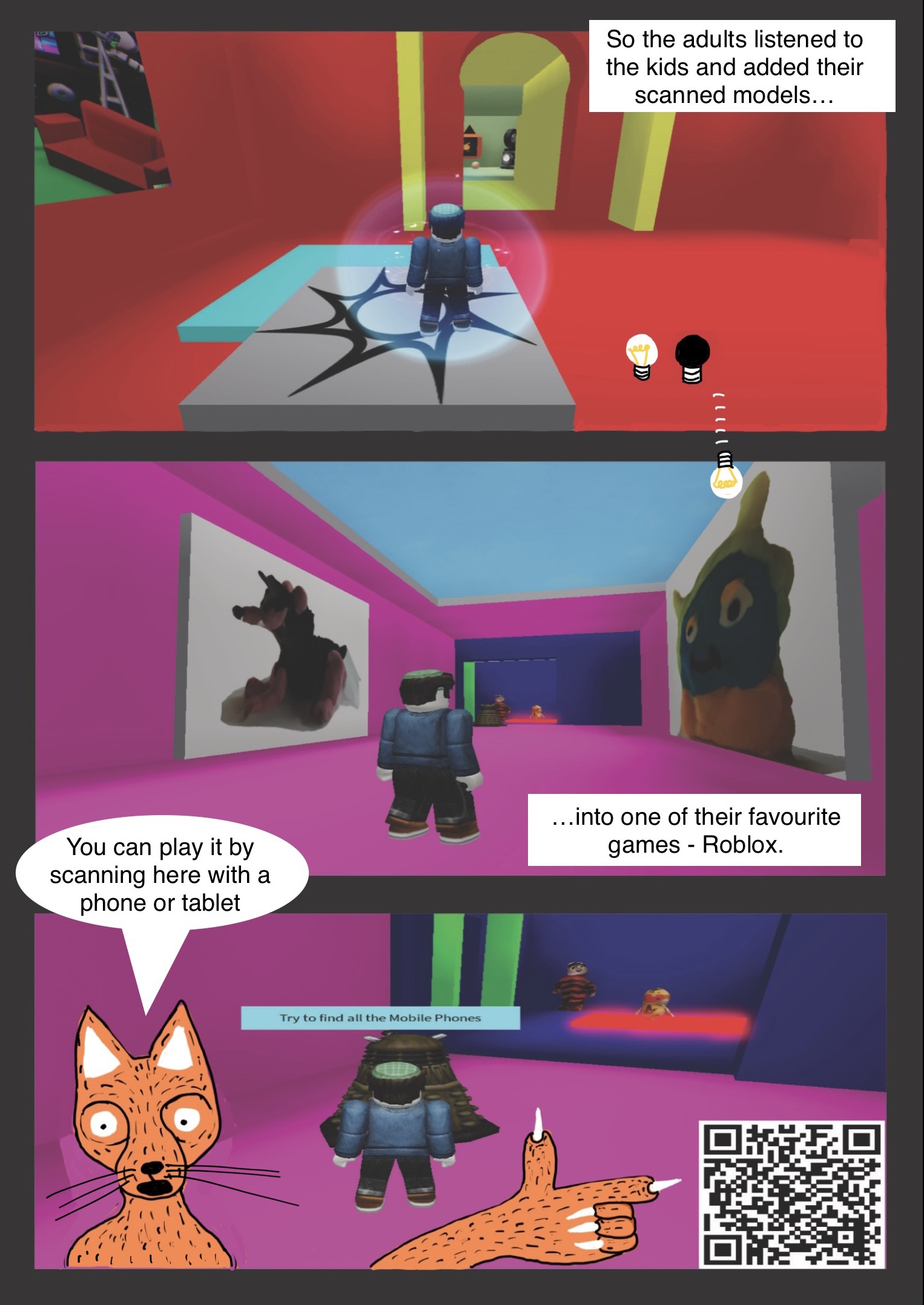
Game by Eleanor Dare
Project Gallery
